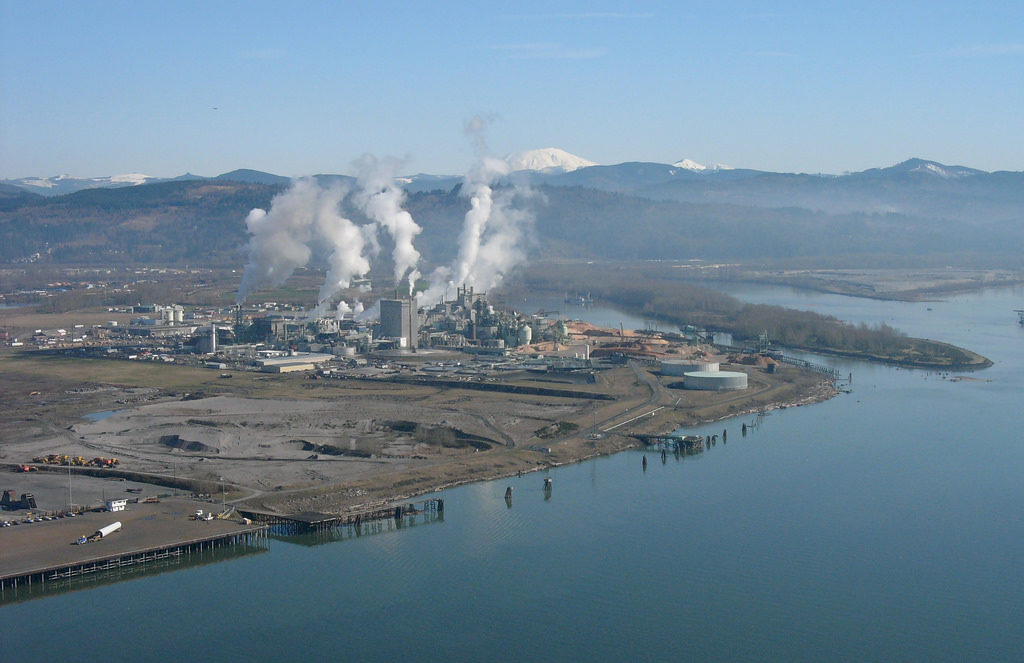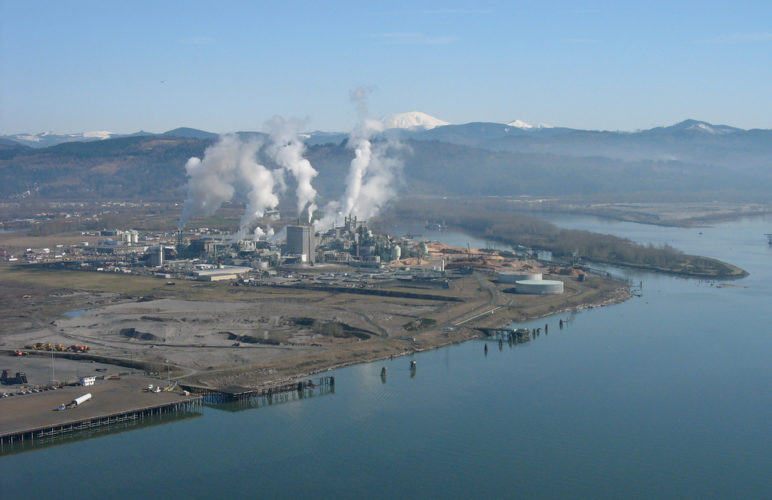Yet another tentacle of the Northwest gas industry seems to be reaching for Longview, Washington, on the Columbia River, where city authorities are now evaluating plans for a new $1 billion gas-to-fertilizer plant.
Pacific Coast Fertilizer proposes to build and operate a facility that would process methane gas (commonly known as “natural” gas) in the manufacture of anhydrous ammonia, a popular nitrogen fertilizer with a notable risk profile. In order to manufacture 1,650 tons of ammonia per day at Longview, the company would on a daily basis consume about 2.5 million gallons of water and discharge about 1 million gallons of treated water from the plant’s cooling process. The facility operators will then store the ammonia on-site before shipping it out via 100 to 200 tanker trucks per week serving West Coast destinations and 12 to 15 marine vessels per year bound for international markets.
Producing anhydrous ammonia typically entails converting methane gas (or LPGs or naphtha) to hydrogen, a process that generates carbon dioxide. In Longview, the company would vent this carbon dioxide into the air. Perhaps more concerning is the potential for “upstream” emissions from the 50 million cubic feet of gas required per day for the plant, roughly twice as much as is burned by the neighboring Mint Farm power plant. Natural gas is almost entirely composed of methane, a greenhouse gas that would escape into the atmosphere in small quantities as “fugitive emissions” all along its route, from extraction well to processing facility to the pipeline system that would transport it to Longview. Methane is such a potent greenhouse gas, however, that even small quantities can be remarkably damaging to the global climate.
Ammonia carries more immediate risks too, because it is both caustic and hazardous in its concentrated form. It is classified as an extremely hazardous substance in the United States, and it is subject to strict reporting requirements by the facilities that handle it. Rightly so, because ammonia accidents are relatively common and they can be very serious. For example, a 1976 tanker truck collision killed five people and sent 78 more to the hospital after they inhaled ammonia fumes in what is known as the worst accident in Houston’s history. And a 2002 derailment of a train carrying ammonia in Minot, North Dakota, killed one person, seriously injured 11, and cause minor injuries to 322 more when five rail cars ruptured and the fumes spread downwind for five miles. According to the Centers for Disease Control, ammonia releases tend to form ground-hugging vapor clouds that increase the chance of human exposure, which can result in burns, blisters, and death.
In 2013, the Center for Effective Government found:
Over the past 15 years, almost 1,000 accidents have occurred at 678 of the facilities storing large quantities of anhydrous ammonia, and 133 of those facilities had multiple accidents. In other words, 6.8 percent of the facilities storing anhydrous ammonia had an accident in the past 15 years, and over a fifth of these had multiple accidents. These accidents resulted in 19 deaths, 1,651 injuries, and almost $350 million in property damage. Moreover, 63,676 people in the facilities and surrounding communities had to be evacuated when accidents occurred. Although not all the accidents at these facilities were the result of anhydrous ammonia releases, many were.
Anhydrous ammonia is environmentally risky too, especially for aquatic life. According to the University of Minnesota, even extremely small quantities of ammonia can kill freshwater fish— as little as one-half cup in a million gallons of water—making it particularly hazardous near waterways like the Columbia River, which is home to endangered salmon species. In agricultural areas, accidents with ammonia are not unheard of. A relatively small-scale tractor accident in 2016 spilled the chemical into an Indiana creek, killing at least 500 fish. A larger ammonia pipeline spill in 2004 killed 25,000 fish in a nearby Kansas creek.
The first step in the permitting process is an Environmental Impact Statement. Right now, the public has an opportunity to weigh in on the “scope” of the review—the range of topics for regulators to consider—until November 15 by submitting comments here. On November 8, the public can comment during a hearing at the Cowlitz County Event Center in Longview. Details on the event and instructions for submitting comments are here.












Cass Martinez
Texas loves us.
“Pacific Coast Fertilizer LP is a joint venture backed by Texas-based Saturn-Ferrostaal Chemicals LLC, Ferrostaal, Haldor Topsoe, and Canada-based Pacific Fertilizer.”
http://tdn.com/news/local/longview-s-mint-farm-chosen-for-billion-fertilizer-plant/article_11d7bf68-e6e3-5b2b-9bbe-ad13b99c6b5b.html
John Abbotts
Hello Cass,
Thanks for your comment and interest in Sightline’s work.
For the sake of brevity, we omitted details on the partners of the joint venture. But readers can find further details on the company’s web pages, at http://pacificcoastfertilizer.com/about/our-team/,
and then further details on each partner by selecting the respective links.
You may not be surprised to find that multinationals based in Germany and Denmark also love Longview.